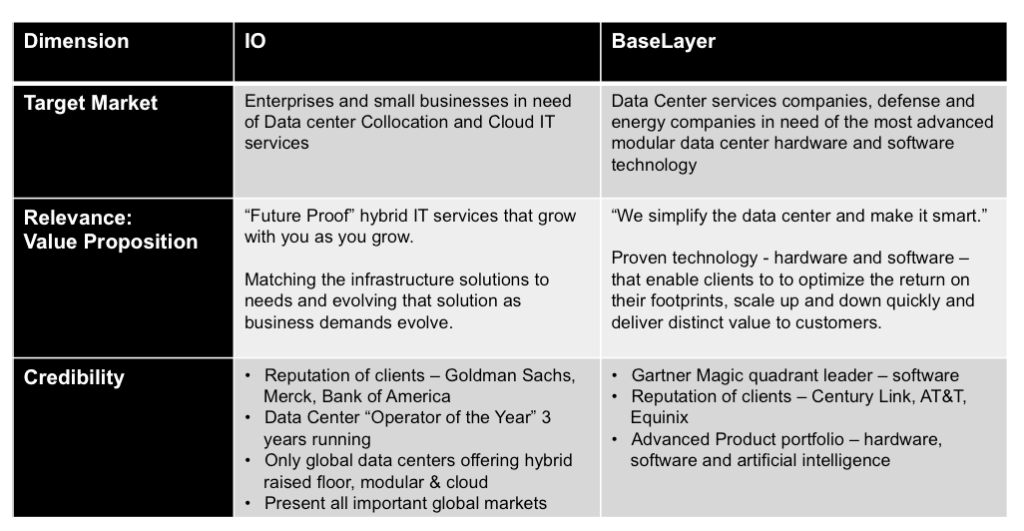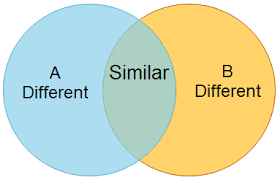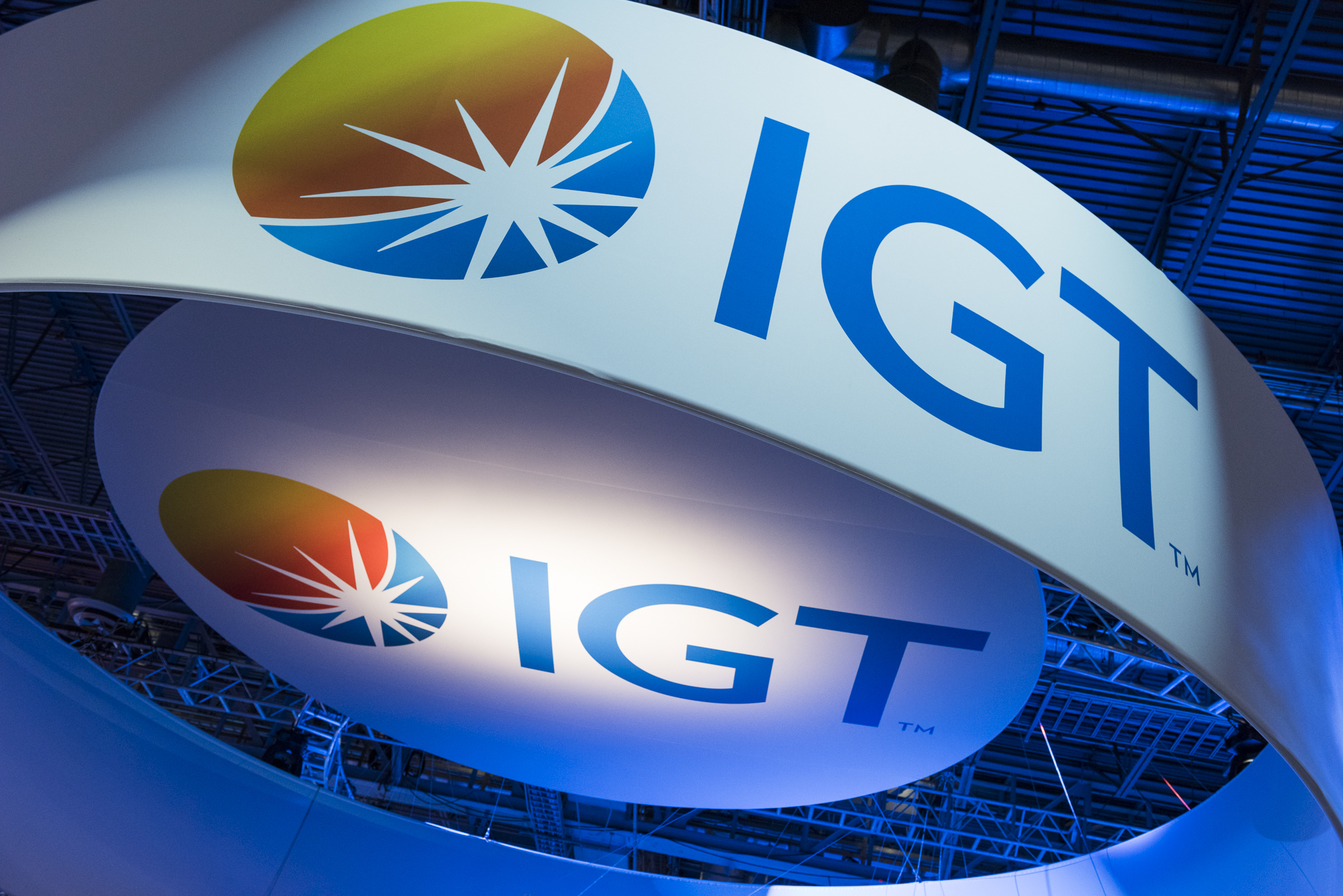
7 Lessons For Marketers From The 2016 Campaign
March 30, 2016
While for many the 2016 presidential campaign has been painful to watch, there’s key learning – both good and bad – for marketers to apply in crafting and executing our marketing plans.
If you want to establish a powerful and unassailable position, connect with core needs.
The reason why Donald Trump and Bernie Sanders have drawn disproportionately large crowds to their events is that they’ve both tapped into the politically disenfranchised in a powerful way. While going about it with differing messages, these two polarizing candidates have drawn important support by connecting with these target’s core concerns. In the process, they’ve fostered strong convictions that defy logic.
While it’s important to have a strategy, success often depends on tactical opportunism.
The successful candidates in this race are masters at counterpunching. They rule the news cycle by taking advantage of events as they unfold. They thrive by listening carefully and responding quickly to capitalize on opportunities as they arise.
Differentiation and neutralization are equally important.
We all know it’s important to differentiate our offer from competition, but success in this race has been as much about neutralizing competitive advantages as it has been about differentiation. This one is tricky for there’s a fine line between success and alienation. But, it’s becoming increasingly clear that marketers need to bring neutralization messages into our narrative to help distinguish our offer, particularly if we’re challenging the status quo.
Authenticity remains critically important.
It’s important to remain true to who you are if you want to build meaningful connections. One of the most promising candidates going into the campaign is no longer a factor in the race because he morphed his persona three times in the course of the campaign. Targets sniff that out fast and quickly turn away if you fail the genuine test.
Mechanical repetition of key talking points can alienate targets.
Marketing today is about building a dialogue. That same candidate’s waterloo moment came in the midst of a national debate where he mechanically repeated his key talking points over and over in the face of critical onslaught. It turned many interested voters off and cost him valuable ground, which he never recovered. Targets want to be talked with, not at.
Influencers can be effective if they are credible.
We’ve seen a marked dilution of the impact of endorsement in this campaign. Does that mean influencers are no longer valuable? Research tells us that third party endorsement remains one of the most powerful catalysts in the buying decision for both consumer and b2b targets. But, targets must believe the endorser’s message. They just can’t say it. It must be credible.
The impact of traditional marketing media is on the wane.
Fascinatingly, attack ads are not working in this election as they have in prior contests. The most polarizing, yet successful candidate has leveraged free media and relied primarily on Twitter and Instagram as his social media of choice. This has worked gloriously for him. Targets are consuming media as they live today. New channels are reaching people more effectively than traditional channels. It’s time marketers take notice.
These are some of the key lessons I’ve taken away. I’m sure there are many more insights that each of you have gleaned from this process. I’d love to know what they are. Please share.
Posted under: Branding Strategy, Changes in branding

Curing Brand Schizophrenia
January 28, 2016
Removing a Growth Inhibitor: Curing Brand Schizophrenia
For years, big players in financial services and enterprise technology have rolled up organically built and acquired businesses under a single, overarching corporate brand.
This plan made sense when originally conceived. Of the alternative models, this approach generated the greatest efficiencies, provided the most consistency, was the easiest to manage and sustain.
The advantage to this approach lies in its economics. By leveraging a single overarching brand, firms are able to concentrate their media spends and generate significant economies of scale. It’s easy to understand why it has been so widely embraced.
Unfortunately, this approach has its downside.
With limited exceptions, these roll-ups suffer from muddled market perceptions. Just look at the biggest banking and enterprise IT firm brands today. Distinctiveness is sacrificed by basing the collective positioning on a common denominator across the business. This compromises the ability of individual business units to compete effectively with more focused, relevant and agile competitors.
The resulting “brand schizophrenia” inhibits growth.
By trying to be multiple things for multiple people, these brands make it extremely difficult for customers and prospects to appreciate the relevance, credibility and value of individual competencies.
Even worse, in some cases unforeseen channel conflicts have created insurmountable barriers to growth.
In response, some forward thinking organizations have embarked on strategies to replace these “roll-up” structures with far more focused pure play models that separate unrelated competencies into distinctly branded, stand alone entities. This refined strategy fuels growth by focusing resources, clarifying market positioning and eliminating channel conflict.
Doing It Right: The IO example
IO is an innovative enterprise IT organization that faced head-on the challenges of “roll-up” structural constraints. The company built world class competencies in IT infrastructure services and IT infrastructure technology, but was increasingly frustrated by results that did not live up to forecasted market potential.
A thorough review of the challenge revealed that these two seemingly synergistic competencies were actually inhibiting growth under a single brand. Customers for the service company failed to appreciate the added value of the technology competency and because the most lucrative market for the technology was other service providers, the structure created an inherent channel conflict that completely impeded growth.
Management took the bold step of splitting the company into two distinct entities to eliminate constraints and fuel growth.
Doing it Wrong: The HP example
Confronting similar challenges, HP embarked on new strategy to distinguish its consumer technology business from its Enterprise IT organization.
Unfortunately, this well considered strategy is compromised by poor execution. The resulting new brands are too closely aligned. They share the same name and the same original visual style.
How to do it right?
If you’re going to do it, then really do it.
The key learning from reviewing HP’s mistake is that success in such an endeavor requires pushing the businesses and brands apart to create two distinct entities.
This means examining the strengths and weaknesses of each entity and building the respective brands on the basis of the strengths that are unique to each. Shared strengths will help with operational success, but for brand building purposes we need to focus on the strengths that each business owns uniquely.
Building the Brand BluePrint
If you going to do this, the key to success lies in how you frame the strategy. The goal is to define the focused brands as distinctly as possible to avoid confusion in the marketplace.
The easier this is to do, the more comfortable you can be that the separation decision is right for the business. Conversely, if you’re finding it difficult to distinguish the brands then the separation strategy is probably not the best solution for the challenge you are attempting to solve.
To build such a strategy, we employ a simple, yet effective model to shape the foundation for the brand. Our “Brand BluePrint” model starts with the business challenge and focuses the brand strategy to solve this challenge and enable opportunity.
The key components of this model include:
It’s all about crispness
In the end, the key to eliminating the constraining impact of brand schizophrenia lies in defining the individual brands a crisply as possible. This new clarity will free the businesses to compete more effectively with pure play competitors and will eliminate the hurdles of channel conflict.
Success starts with an effective strategy. If you’re going to do it, drive the brands apart as far as possible. The crispness will make it easy for targets to embrace the value.
Posted under: Branding Architecture, Branding Strategy, Demand Driving Strategy
The Power of a Refresh
October 6, 2015
I use Asana – a wonderful productivity enhancing, program management app. Asana is entrenched as part of my everyday ritual. I can’t imagine living without it.
Yet, like most other habits, my relationship with Asana is largely back of mind. The app is an important tool, but I rarely consciously think about it.
This week, Asana launched a very well done refresh, including a fresh new logo redesign. Interestingly, the net effect brought the brand front of mind for me again.
I was reminded how central Asana is to my everyday work life. I went to the blog and the website and discovered new features that are even more helpful. I learned and appreciated more than I have in the past year. The brand refresh helped renew my relationship.
My experience with Asana is very similar to that I have with Apple and other important brands. A software or hardware refresh often has the same impact. I learn more. I’m reminded of how important the brand is to my everyday life and I recommit to the brand again.
Given my ADHD, that all lasts just a few days. But, the impact is extremely powerful.
All of which leads me to believe that brands should think differently about how regularly to refresh.
Conventional wisdom suggests a five-year refresh cycle, at the minimum. I think that dated advice is no longer helpful.
Instead, I’d be looking to refresh some element of the customer experience twice yearly to keep customers actively engaged with your brand.
This doesn’t mean taking steps as dramatic as those taken by Asana. But, it does mean being much smarter and more aggressive in keeping your brand front of mind with your core marketplace.
I’d start today to craft a regular refresh plan and roadmap. Begin with an assessment of user experience needs and opportunities. Then craft a plan with logical stages – from regular clean-up to transformative regeneration. The return will more than offset the effort.
Posted under: Branding Strategy, Changes in branding, Customer journey mapping, Demand Driving Strategy

How Branding Strategy Goes Wrong
June 2, 2014
I spent yesterday in an all day session kicking off a new partnership between two premier firms. Our mission was to begin the process of positioning and marketing a new product offering that will be the basis for the partnership.
Lots of branding strategy and design work had been accomplished in the past year by one of the partners as a prelude to finding the right strategic partner. We spent the morning reviewing that work to determine our go forward plan.
This review was quite enlightening. The new brand has the potential to be quite distinctive in the market – in spite of the strategy it was designed to fulfill. Fortunately, the business users leveraged the inspirational quality of the new brand identity to forge delivery strategies that have the potential to ladder up to a compelling overall brand strategy. But, the strategic platform that led to the actual creation of the brand revealed what can happen when so called branding experts build strategies that are disconnected from the reality of business.
Yesterday’s session highlighted three common flaws I regularly see in branding strategies that are not fit for purpose.
1. Designed for a moment in time
All too often, branding strategies are developed against a state of the moment understanding of the business. Positioning plans are developed relative to a real time assessment of competitor strengths and weaknesses and market psychology. Decisions are made. Stakes set in the ground. And then … everything changes, and the strategy is no longer relevant.
True experts in branding must understand the flow of the business, psychology and market dynamics. Strategies must be designed to anticipate transformation through new entrants, new technologies or competitor turnarounds. That’s hard.
Scenario planning makes it easier. By charting possible scenarios and building a strategy that embraces the broadest range you can make sure your brand strategy is future proof. Re-assessing on an annual basis and morphing as needed adds additional protection.
Alternatively, you can forgo “strategy” in favor of what my friend Jim Little and I have coined, “tactical opportunism.” In this case, you build your branding platform to capitalize on in the moment advantages and then constantly morph the platform to maintain advantage as customer psychology and market dynamics continue to evolve. This form of “branding chess” requires true market understanding and nimble response, but it is often the best tactic to stay ahead in fast changing, quickly transforming markets.
2. Misguided pursuit of emotion
We’ve all read the articles and listened to the gurus – effective brands must forge emotional connections in order to thrive.
While this is surely true, our problem lies in how so brand practitioners believe that emotional connections are forged. Unfortunately, conventional wisdom defaults to a fallacy where emotional connections are the Holy Grail and rational connections are simply category antes.
This widely held fallacy ignores customer psychology and disregards the new engagement process that shapes consumer, b2b and b2b2c markets today.
Powerful relationships are built on the emotional connections that are forged through the process of fulfilling rational needs.
Today’s engagement process has become highly rational. No matter whether we’re purchasing a car or a cloud computing solution, we do our homework, listen to the experts, evaluate, test and hone our understanding as we move closer to a solution. As our rational thresholds are satisfied, emotional attractions begin to form. In the process, we finalize our decisions based upon what we believe the offer will do for us, fit into our life and make us feel. Rational and emotional drivers are inextricably linked with rational drivers serving as the gateway.
You can’t build sustained emotional connections without satisfying rational thresholds. No matter how good the product makes me feel, I’ll never love it if it doesn’t work for me.
3. Disconnected from business and marketing
Again, all too often, what is passed off as brand strategy ignores the obligation that effective strategies have to fuel marketing and CRM. The brand is presented in isolation with the expectation that others will pick-up the baton and develop the required marketing and customer experience plans.
Sometimes this works out, as was the case yesterday. Unfortunately, more often than not, it results in diluted effectiveness and lost opportunity.
My experience since founding Catalyst has taught me that branding, marketing and customer experience must be inextricably linked in order to drive business success.
Branding strategy must fuel engagement and define the imperatives to be delivered throughout the customer experience. It must highlight touch points and content to be leveraged in the process of managing to purchase and it must define standards for behavior and interaction that help manage from purchase to advocacy.
True experts understand that branding, marketing and customer experience are all linked. When they are, effective strategy can actually drive demand and influence success.
Posted under: Branding Strategy, Demand Driving Strategy, Success Driving Briefs

Managing Demand: Branding is Necessary, But Not Sufficient
March 3, 2014
During my long career at Interbrand, my colleagues and competitors operated under the misconception that branding was the center of the universe. All we needed was to build a strong brand for a client and their business would grow dramatically. Unfortunately, reality proved us wrong.
I spent the last two months working intensely with four great companies to catalyze growth and in not one of the cases were we focusing on making the brand stronger. We’d done that already, quite successfully in each case. Instead, we were focusing on building plans and programs to build stronger engagement with, and more effective fulfillment of, the core brand promises we put in place earlier.
Since we launched Catalyst three short years ago, it is compellingly clear that branding is necessary but insufficient in and of itself for managing demand. Instead, we must simultaneously master three integrated challenges – branding, engaging and fulfilling.
Branding: Establishing the Foundation
Effective branding establishes the foundational promise. We provide a solid platform for growth by articulating “who” the brand is, “what” it does and “why” it does it. This process matches the brand’s distinctive skills with the needs of its target audiences to articulate a promise that is relevant, credible and distinct. We use all of our finely honed skills to define the brand’s personality and reflect it through a unique communication style using both verbal and visual cues, managed consistently across the wide array of touch points the brand uses to communicate with its targets.
Engagement: Managing to Purchase
Engagement is the process of managing the customer’s journey from the initial need or desire that triggers the demand, through the search and evaluation process to the point where the purchase decision is made. Here, success is predicated on understanding the steps of the journey, the key milestones in the process and the touch points consulted to make decisions along the way.
This process has transformed dramatically with the rise of the internet and social media. Gone are the days when a brand could assume success by shouting through advertising and then selling hard with face-to-face interaction. Today b2b and b2c customers move through a thoughtful process of learning, evaluating and deciding that is best fueled by well placed information and well-timed problem solving.
Opinions of key influencers, from friends to experts; company owned, influencer sponsored or retailer provided web sites; social media, including Facebook, LinkedIn, Twitter, Google +, Pintrest, Tumblr, Instagram and Yelp; PR; and events are all critical touch points that need to be evaluated and used effectively to engage and guide targets through the process of making the decisions important to your brand.
This fresh understanding of the engagement challenge has influenced the creation of a new discipline – inbound marketing, elevated the importance of strong informational content and given rise to wide array of marketing tools and skills, including marketing automation and lead management, search engine optimization, and influencer relations. Used well, these tools provide us with the skills to better manage the engagement process and the insight to understand quickly what is working and what is not working in the mix. We can now optimize for effectiveness and make the brand work harder than ever before to build rich and rewarding relationships.
Fulfillment: Securing the Relationship
Branders and marketers are only now appreciating the need to closely manage the process of fulfilling the promise once the target is actually engaged. Delivery is more important than ever today because targets are constantly testing and revisiting their purchase decisions as they bring the new product or service into their lives.
Fulfillment involves understanding and managing the process that customers move through once they’ve made the decision to purchase, from initial integration, installation and testing through ongoing usage and the decision to commit to the product, service and brand. Again, rich informational content and effective problem solving drive success in this process.
The key touch points are very similar to those used in the engagement process, but they are used differently once the purchase decision is made. Here the emphasis is on enablement as customers seek ways to get more out of what they’ve purchased by themselves. It is also important to establish a safety net with opportunities for interaction should the challenge be more difficult than individuals are capable of managing on their own.
Effective enablement and support helps to validate the purchase decision and in the process helps to forge a more fulfilling relationship with the customer. Fulfilled customers buy more from a brand. They also tell others how fulfilled they are, which in turn influences engagement with new targets and helps make the brand stronger. It’s a self-renewing cycle.
The beauty lies in the fact that all through the process we can gather feedback, learn and refine to ensure that we’re making it better and better all along – improving the value of brand, engagement and fulfillment as integrated demand management tools.
With these three important tools, we can manage and grow demand. Handled separately, these tools are only limited in their ability to assure the desired result, but managed together as an integrated whole we can assure that we’re doing what’s necessary to spur growth.
There’s no question that to be effective, you need to start with a strong brand, but that’s not enough for managing demand. Don’t let any consultant advise you that it is. Work on all three together and you’ll make the impact you desire.
Posted under: Branding Strategy, Changes in branding, Demand Driving Strategy, Internal Brand Engagement, Uncategorized













